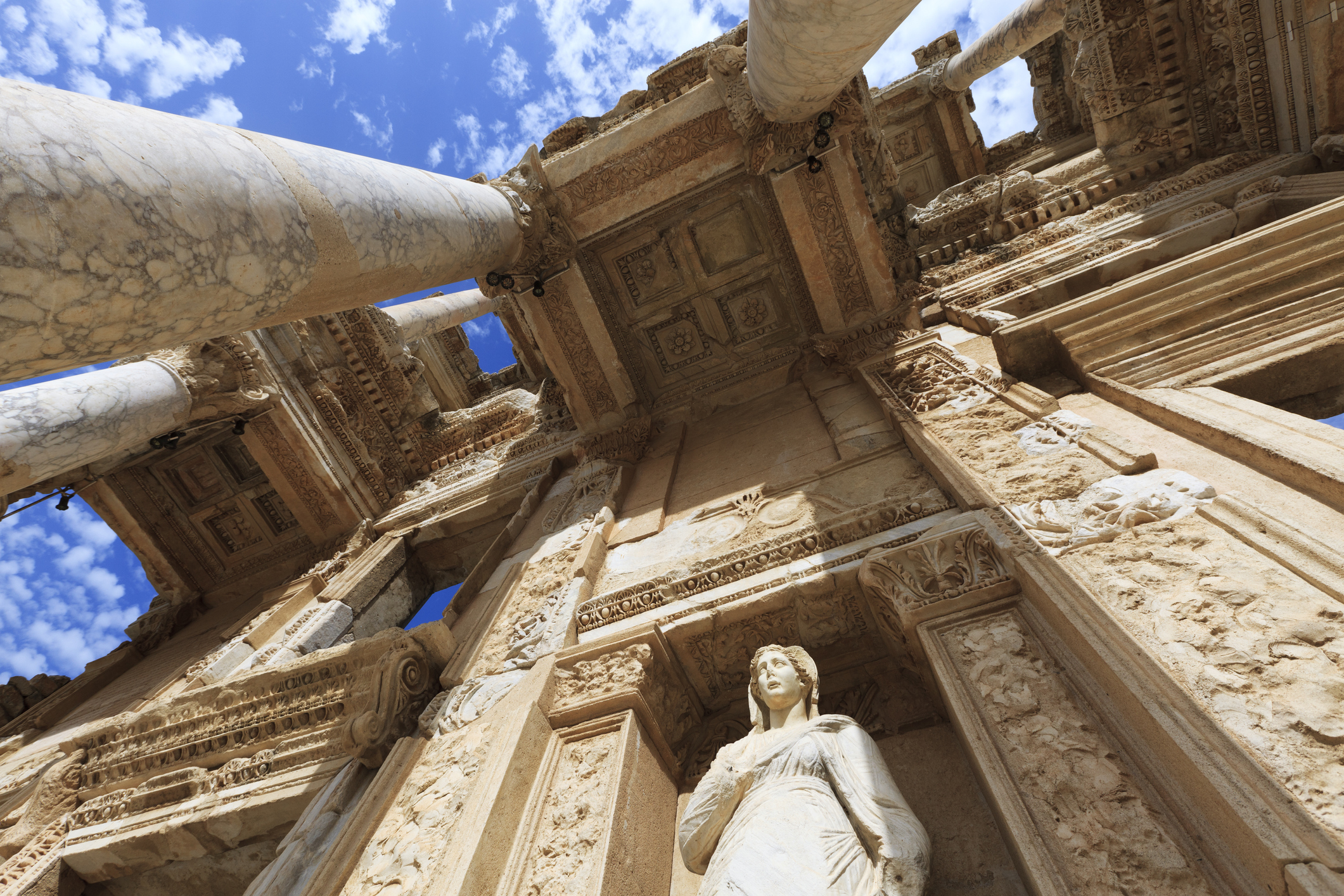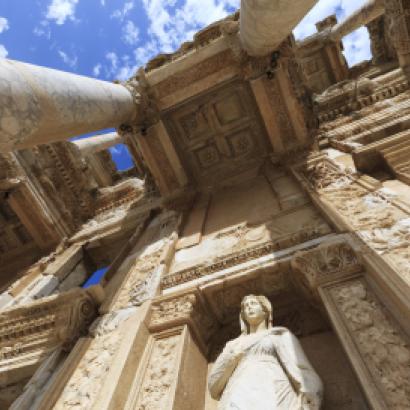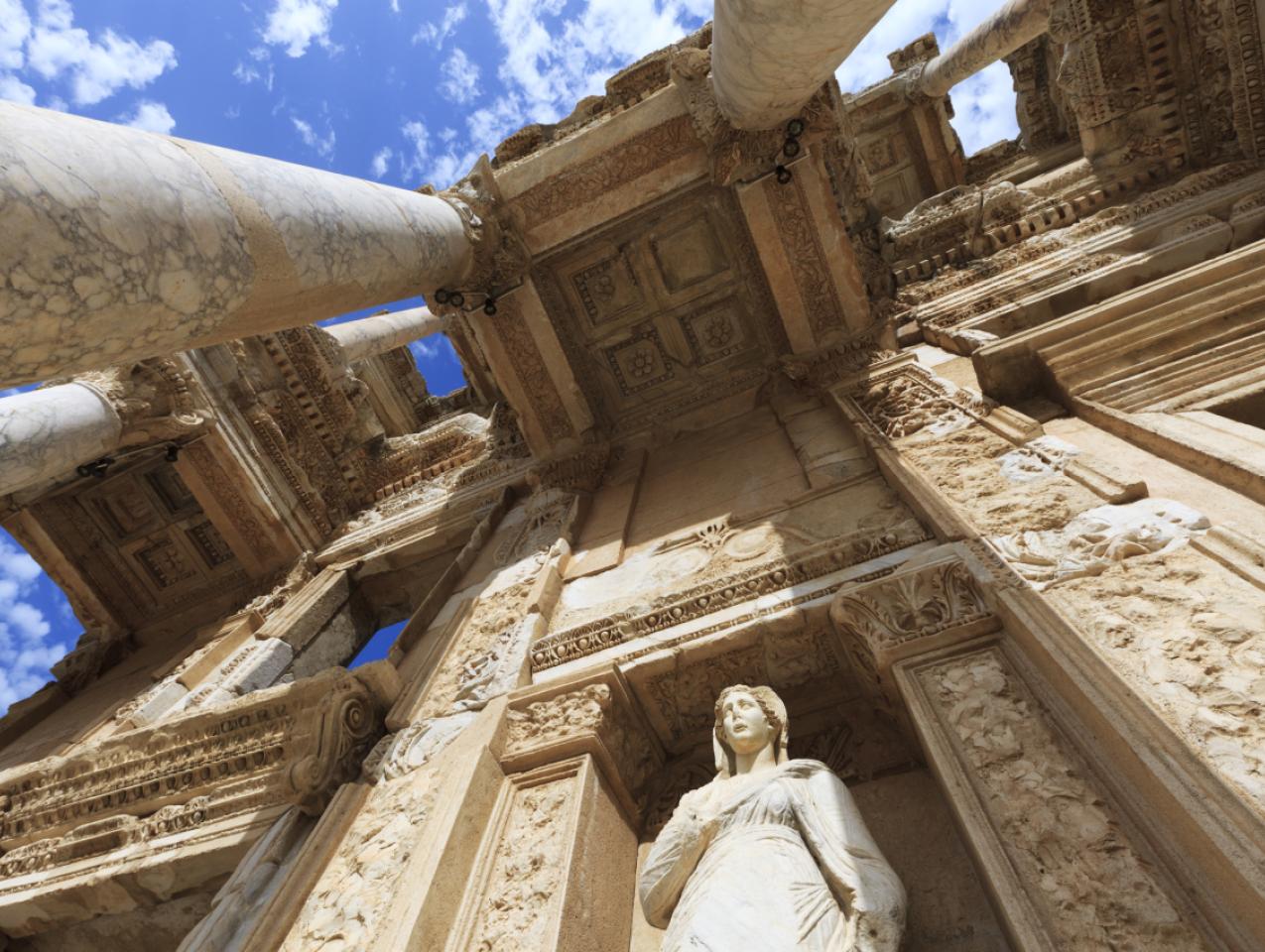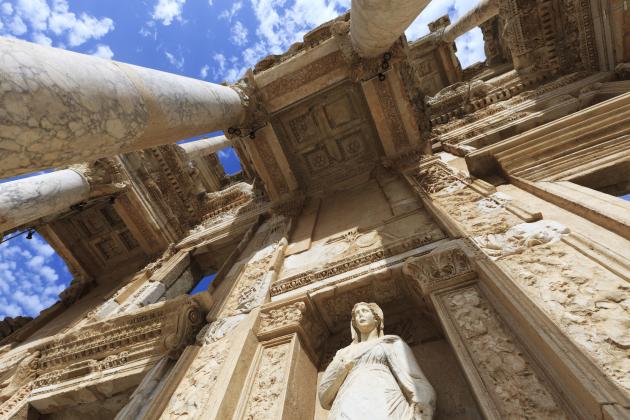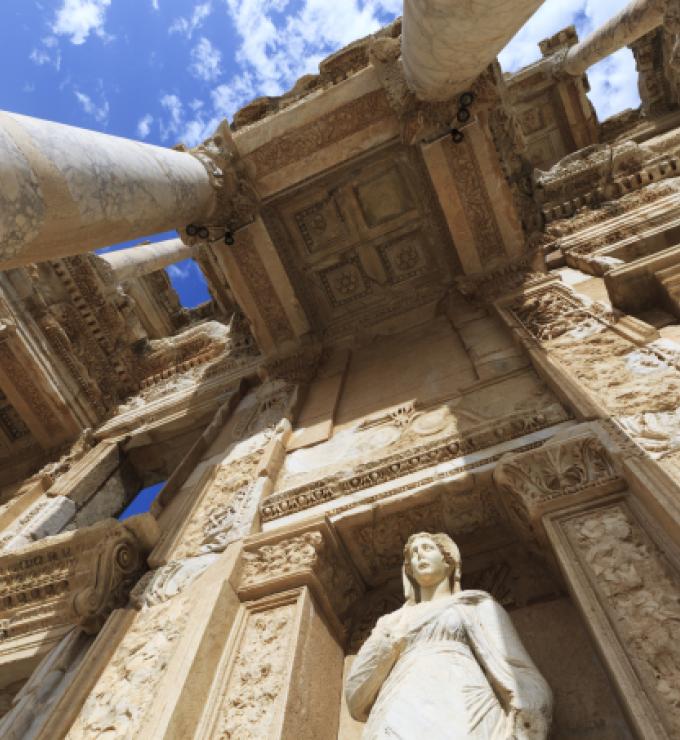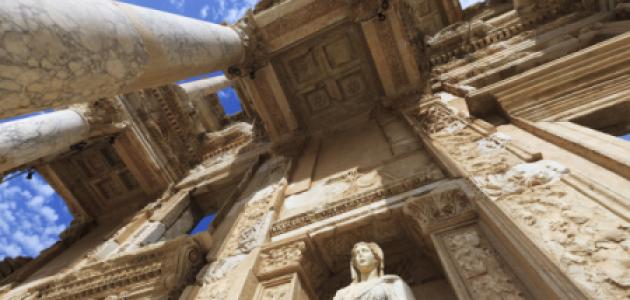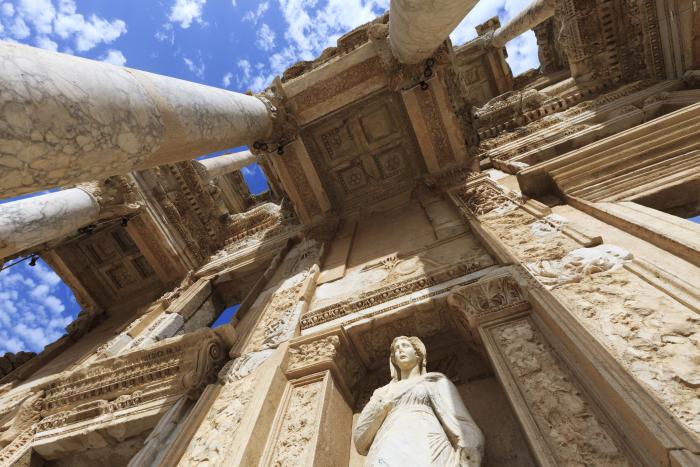- Economic
Economic historians of long-term development tend to focus on the last few hundred years of human history. The reason is obvious: reliable data for earlier periods is scarce and difficult to interpret. Some historians have argued that nothing of interest to economists happened before about 1800; others have been willing to push the date back to 1700, or even 1600. But the ancient past was long regarded as an era of stagnation without measurable growth.
In 2002, Jack Goldstone published an influential paper calling attention to notable cases of “efflorescence,” defined as “a relatively sharp, often unexpected upturn in significant demographic and economic indices, usually accompanied by political expansion and institution building and cultural synthesis and consolidation.” Goldstone claimed, however, that “what all of these ‘high’ or ‘golden’ periods failed to do . . . was to sustain a sharply rising level of per capita income past two or three generations of population growth.” So, growth was soon followed by “stagnation or decline.”
The ancient Greek world, from about 800 to 300 bce represents a Goldstone-type efflorescence but far surpassed the expected lifespan of two or three golden generations. Greece has long been renowned for its high culture—visual and performing arts, literature, philosophy, and mathematics. But discussions by humanists of what was once commonly called “the Greek Miracle” was typically divorced from any attempt to describe, much less to measure, economic development. That began to change twenty years ago, as a few archaeologists and historians realized that proxy evidence could be brought to bear on the question. Stanford University’s Ian Morris was a pathbreaker; His 2004 article argued for sustained growth, pointing to several proxy measures, including ancient Greek houses: the average size (based on floor plan) and quality of construction of a one-family ancient Greek house improved dramatically from 800 to 300 bce. Meanwhile, new work on ancient demographics showed that during the same period, the population of the ancient Greek world grew dramatically. Other scholars began to study ancient wealth and income inequality, longevity, and health—the last made possible by rapid advances in the scientific study of skeletal remains.
Building on these earlier results, I wrote The Rise and Fall of Classical Greece, arguing for sustained growth in the Greek economy. I illustrated long-term development in a chart by multiplying the estimated total population of “core Greece” (the territory of the Greek state in 1912) by estimated per capita consumption from 1300 bce to 1900 ce.
Development Index (population multiplied by consumption estimates), 1300 bce to 1900 ce
Notes: LBA = Late Bronze Age. EIA = Early Iron Age. EH = Early Hellenistic. LH = late Hellenistic. ER = Early Roman. LR = Late Roman. EB = Early Byzantine. MB = Middle Byzantine. EO = Early Ottoman. LO = Late Ottoman. Ind = Independent Greek State.
Both population and consumption estimates are very rough, but the trend is not in doubt. By 800 bce, Greece had recovered from the collapse of the Late Bronze Age. By 600 bce, it had broken out of the low “premodern normal.” Over the next 300 years, Greece reached peaks of population and consumption unequaled until the early twentieth century. Every available proxy measurement trends in the same direction. The levels of urbanization and infrastructure track other evidence. And meanwhile, at least in the city of Athens, it appears that income inequality was low. The evidence now seems incontrovertible: the ancient Greek world had an exceptionally long efflorescence, prosperity was not monopolized by the elite, and economic growth was closely correlated with the explosion of culture once described as miraculous.
Economic historians resist “miracles” as explanations. So, having shown that there was growth, and when, we were left with Why? Causal explanation in social science is difficult outside of controlled experiments. Any attempt to explain ancient Greek economic growth must acknowledge that multiple factors were at play, that we cannot fully disentangle those factors, and that the feedbacks among them were complicated and are not readily observable.
That said, it is clear that cultural norms and formal rules played a big role in the rise of the ancient Greek economy. In The Rise and Fall of Classical Greece, I suggested an institutional hypothesis: “Fair rules and competition within a marketlike ecology of states promoted capital investment, innovation, and rational cooperation in a context of low transaction costs.” Geography (mountainous terrain with relatively isolated valleys, a long indented coastline, and easy access to the sea) and a Mediterranean climate (suited to growing storable grains, grapes for wine production, and olives for oil) provided the framework. But the low level of development throughout most of Greek history shows that geography and climate were insufficient conditions. Likewise, although there was technological innovation in the Greek world, it was minor compared to modernity. By contrast, Greece was a hotbed of institutional innovation, experimentation, adaptation, and emulation.
The Greek ecology of states was decentralized. The approximately one thousand self-governing ancient Greek city-states actively competed for power, resources, and prestige, yet they also developed sophisticated forms of interstate cooperation, including alliances and federations. Emulation of institutional best practices was common. While each state had its own institutions, key political and economic institutions are similar across multiple states in the ecology. Movement of individuals and communication between states was facilitated by a shared language and customs.
Ancient Greek institutions were designed to resist both external domination and dominating executive authority. The political norm was collective rule by an extensive part of the state’s free, native-born, adult, male population—that is, by its citizens. By the mid-seventh century bce, some Greek states had already established legal constraints on executive authority. Formal constraints were common by the fifth century bce.
Athens is by far the best documented Greek city-state and was the most influential of the classical-era democratic states. Athenian institutions that protected private property while allowing for taxation based on income and wealth were widely adopted across the ecology. Magistrates were subject to strict accountability procedures. The procedural rules in Athenian democratic assemblies pushed toward consensus on the best-available policy option. Unlike the information-poor “bubble” in which autocrats make decisions, open Athenian processes of decision-making allowed information to “flow upward” from a large and diverse population. Athenian legal processes protected citizens from expropriation by corrupt officials or powerful individuals. Constitutional rules ensured that policy decisions accorded with established law while enabling institutional innovation.
A shared culture and emulation of successful institutions drove down transaction costs and promoted a thriving interstate trade: state-issued silver coinage, widely adopted in the sixth and fifth centuries bce, was augmented with fiduciary bronze coinages. Weights, measures, and monetary standards converged to a few popular standards. Harbor dues were standardized at 2 percent of the value of imports and exports. Leading naval and commercial states suppressed piracy. All of this encouraged local specialized production and comparative advantage. Greek states imported wheat from fertile peripheral regions (Ukraine, Egypt), exporting wine, olive oil, and manufactured goods. Commerce was facilitated by the development of private banks and credit instruments. Meanwhile, high mobility allowed the spread of expertise; experts in military technology, strategy, and state finance moved easily across the ancient Greek world.
The mobile experts of the classical period included sophists and philosophers who competed for students and founded schools, producing a floruit of theoretical knowledge. As I have argued in a new book, The Greeks and the Rational: The Discovery of Practical Reason, among the major results was a widely shared theory of instrumental rationality—that is, an explanation for human motivation and action. As elaborated in the works of ancient Greek writers, the theory explained rational choice making with reference to expected utility maximization. Just as in contemporary theories of rational choice, human behavior was held to have its microfoundations in the rational decisions made by self-interested individuals, each making choices strategically in a context of other similarly motivated persons. States were likewise understood as rational collective agents. Self-enforcing Greek institutions, designed to be incentive compatible, underpinned the growth of the sustained Greek economy.
Conclusions
While paltry by modern standards, economic growth in the Greek world 800 to 300 bce was remarkable by premodern standards. It is correlated with, and partially explained by, the development of historically distinctive ancient Greek institutions and by widely shared cultural assumptions about individual motivation. Rules were established by rational bargaining among self-interested citizens under high-stakes conditions rather than by a self-interested third-party ruler. As such, rules were designed to ensure collective security and conditions regarded as fair by citizens. Ancient Greek states competed for power and prestige while also cooperating in ways that promoted mutually beneficial exchanges of specialized goods and services. Capital investment was promoted by property rights and regulations that regularized interstate exchange; transaction costs were lowered; and mobility was facilitated by a shared culture, language, and assumptions about motivation and behavior.
Two questions remain: First, why was the ancient Greek efflorescence not more fully appreciated by historians before the twenty-first century? And, next, why was growth not sustained indefinitely and why did Greece ultimately return to the premodern normal of low population and near-subsistence consumption? I hope to address those questions in future communications.
Read the full working paper here.
Josiah Ober is the Markos and Eleni Kounalakis Chair in Honor of Constantine Mitsotakis in the Department of Classics, professor of political science and classics, and professor of philosophy (by courtesy) at Stanford University.
Research briefings highlight the findings of research featured in the Long-Run Prosperity Working Paper Series and broaden our understanding of what drives long-run economic growth.






